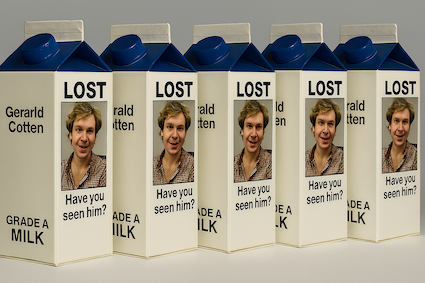TL;DR :QuadrigaCX CEO Gerald Cotten died suddenly, taking $190M in crypto with him. The catch? It may have been clients’ money. With no backup keys and empty wallets, the crypto vanished—and so did any clear answers. Was it mismanagement, a Ponzi, or a perfect exit scam?
It All Started When
Gerald Cotten wasn’t your average crypto bro. No Lambos. No vape clouds. Just a polite Canadian with a background in business and computer science, a fondness for charity talk, and a boyish smile that could make your grandma trust him with her Wi-Fi password. He co-founded QuadrigaCX, Canada’s largest crypto exchange at its peak, serving over 115,000 users and processing more than $1.5 billion CAD.
In the wild-west days of crypto, Cotten styled himself as a stabilizing figure—more Boy Scout than Bitcoin Bandit. He frequently assured users that funds were secure, often emphasizing the importance of cold storage for safety. And cold it was. So cold, in fact, that when Gerald unexpectedly died in India in December 2018—allegedly from Crohn’s complications at the ripe age of 30—nobody could access the wallets.
Because Gerald, in a masterclass of operational idiocy (or brilliance, depending on your level of paranoia), was the only person with the private keys.
And Then
Cue chaos. In the wake of his sudden death—reported while opening an orphanage, no less—QuadrigaCX froze. Customers couldn’t withdraw. Rumors spiraled. People wanted answers, but all they got was a widow, a death certificate from India, and a company that looked more like a Ponzi scheme unraveling in real time.
It got weirder. When court-appointed monitors examined the “cold wallets,” they found… nothing. Not untouched funds. Not misplaced tokens. Just empty addresses that had been empty for months, some even years. The wallets weren’t locked—they were looted.
Turns out, Gerald had been shuffling money around like a digital game of three-card monte—taking new deposits to cover old withdrawals. At the same time, he was allegedly living large, buying planes, traveling first class, and making big crypto bets on other exchanges using customer funds.
All the while, QuadrigaCX was operating with all the structural integrity of a melting popsicle stick tower. No succession plan. No backup keys. No multi-sig. Just one guy, a laptop, and a trust-fueled business model built on vibes.
The Facepalm
The fallout was pure crypto opera. Reddit detectives launched full-blown investigations. Netflix released a documentary. There were calls to exhume Gerald’s body. Some people still believe he faked his death and ran off to live on a beach sipping cocktails under a new identity—perhaps funded by, oh, say, $190 million in missing digital treasure.
One Twitter user wrote (but since deleted)
“Imagine dying and still rugged your users from the afterlife. King s**t.”
Another posted a meme of a skeleton clutching a USB drive titled Gerald’s Wallet Recovery Plan.
It’s now enshrined in crypto folklore: when your entire platform depends on one guy not dying with the passwords, you’re not a fintech visionary—you’re a walking HODLaward application.
The Canadian courts declared the company bankrupt. Auditors tried to untangle the mess. And the rest of us? We just stared, slack-jawed, at the smoldering crater where a “trusted” exchange once stood.
So… Does This Deserve a HODLaward?
👍 What do you think?
Was Gerald a tragic tech martyr? A mastermind rug-puller? Or just a really, really bad planner?
Whatever your take, the man was last seen planning to open an orphanage—and somehow orphaned the hopes and dreams of many of his crypto exchange clients bags instead.
He was last seen yelling at a goose… or maybe a customs agent in the Cayman Islands.

